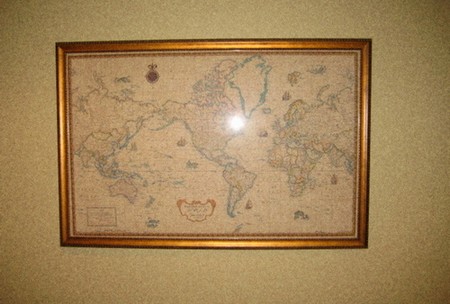How you should fix things to walls depends on the type of wall you want to fix to and whether the fixing will have to take heavy loads. Ordinary screws and nails are suitable only for soft fibrous materials like wood nails usually bend when they are hammered into a brick wall and screws cither will not go in at all, or go in but do not grip well enough to sustain any load. Masonry nails can be used in brickwork.
The usual technique for fixing things to walls is to make a hole in the wall, put in some kind of wallplug (or plugging compound) and then drive a screw into this: the wall plug expands as the screw is driven in. This works well for solid walls, but if the wall is hollow plasterboard walls and lath-and-plaster walls – the fixing has to be made through the wall with a hollow-wall fastener usually an anchor or a toggle.

Making holes in walls
- There are basically four ways of making holes in a wall:
- by hand with a Rawltool – you hold the tool against the wall and hit the end with a hammer while rotating the tool
- with a masonry drill bit in a brace, breast drill or small hand drill
- with a masonry drill bit in an electric hammer drill at either high or low speed
- with an electro-pneumatic hammer drill fitted with a special type of masonry drill. Hammer drills vibrate the masonry drill in and out as it turns.
Few people these days would be prepared to make holes in masonry with a hand-powered drill – though this may be adequate for hollow plasterboard walls. A Rawltool can sometimes be useful, but the best way of making holes is generally an electric drill. A hammer drill is necessary for tougher masonry and, for really hard concrete, an electro-pneumatic drill.
Masonry drills
Masonry drills look like twist drills but do not have lands on the fluted section and their cutting tip is made of tungsten carbide, which is very hard and resistant to abrasion. When you use the drill you must withdraw it regularly, particularly when drilling holes deeper than the length of the flutes.

You will find masonry drills described in one of two ways – cither in millimetre sizes or by numbers that correspond to the old system of fibre wallplugs. Some masonry drills are designed only for rotary drilling; some can be used for both rotary and hammer drilling, while others are designed only for percussion drilling (including the special types needed for electro-pneumatic drills). This last group cannot be resharpencd -to resharpen other masonry drills, you need a special grccn-grit grinding wheel and, even then, the job is not easy.